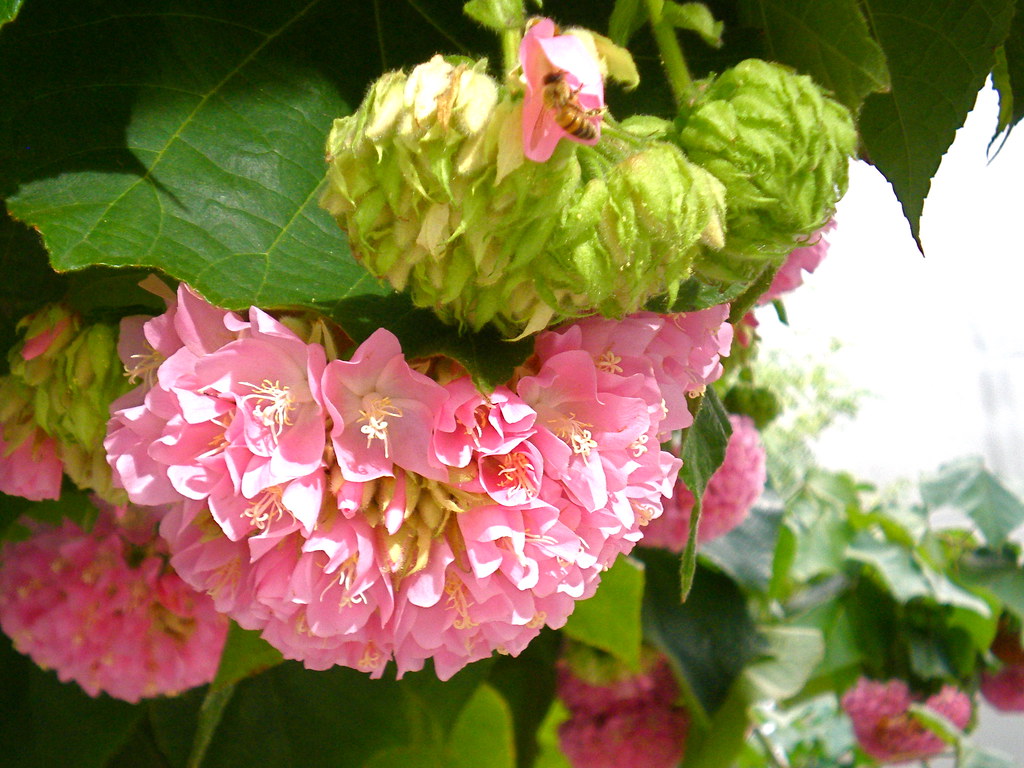The pink ball tree, also known as Dombeya wallichii or tropical hydrangea is a stunning flowering shrub that produces gorgeous, round pink blooms. This unique plant is sure to be an eye-catching addition to any garden. In this article we’ll discuss how to grow and care for the pink ball tree so you can enjoy its vibrant flowers in your own yard.
Overview of the Pink Ball Tree
The pink ball tree is native to eastern Africa and belongs to the Malvaceae family, which includes hibiscus and cotton. This semi-evergreen shrub can grow up to 15 feet tall and wide, with a naturally rounded shape
The pink ball tree’s claim to fame is its showy blossoms that emerge in spring and summer. The five-petaled flowers grow in clusters on the branch tips, resembling fluffy pink balls up to 5 inches wide. After the blooms fade, round seed pods develop. The flowers attract bees, butterflies, and hummingbirds to the garden.
In addition to its ornamental flowers, the pink ball tree has attractive bright green, heart-shaped leaves that provide a lush backdrop for the blooms. The leaves often take on red tints in autumn.
Overall, the pink ball tree provides multi-season interest with vibrant spring/summer flowers, lush foliage, and showy seed pods in fall. It’s a great choice for tropical gardens or anywhere a pop of color is desired.
Growing Conditions for Pink Ball Tree
Fortunately, the pink ball tree is not too demanding and can thrive in the right conditions. Here are the key factors for success:
-
Sun Exposure: Full sun is ideal, with some afternoon shade in hot climates. At least 6 hours of direct sun per day.
-
Soil: Moist, well-draining soil is required. Loam or sandy loam enriched with compost works well.
-
pH: Soil should be slightly acidic, between 5.5-6.5 pH.
-
Water: Keep soil consistently moist but not waterlogged. Provide 1-2 inches of water per week.
-
Temperature: Prefers warm temperatures above 60°F. Not frost hardy. Best in USDA zones 9-11.
-
Fertilizer: Feed with balanced fertilizer in spring when growth resumes. Organic options like compost work well.
With the proper care, the pink ball tree will thrive and reward you with its delightful blooms!
How to Plant a Pink Ball Tree
Pink ball trees can be purchased at local nurseries or ordered online when young plants become available in spring. Follow these tips for planting:
-
Select a site with full sun exposure and well-draining soil. Amend clay soils with compost.
-
Dig a hole 2-3 times wider than the container and 6-12 inches deep.
-
Carefully remove the plant from its pot, handling the stem minimally.
-
Place in the hole, keeping the top of the root ball level with the soil surface.
-
Backfill the hole with native soil, tamping down gently to remove air pockets.
-
Water thoroughly until moisture penetrates deeply.
-
Apply 2-4 inches of mulch around the base, keeping it a few inches away from the stem.
-
Stake the plant if needed for stabilization in windy areas.
Pink Ball Tree Care
Once planted, proper care will ensure your pink ball tree thrives. Follow these tips:
-
Watering: Water deeply 1-2 times per week to keep the soil consistently moist but not saturated. More frequent watering may be needed in hot, dry weather.
-
Fertilizing: Feed with a balanced fertilizer or compost in early spring when new growth appears. Repeat in summer if foliage looks pale.
-
Pruning: Prune right after blooming finishes to shape and remove spent flowers. Avoid pruning in fall.
-
Pest Control: Watch for aphids, spider mites, and scale. Treat with horticultural oil or insecticidal soap. Deer may browse leaves.
-
Winter Care: In zone 9 and warmer, the pink ball tree remains semi-evergreen. In colder zones, it will lose its leaves and should be cut back after frost. Apply winter mulch.
With proper site selection, planting, and care, the pink ball tree will thrive for years of beauty and enjoyment. Be prepared for this showstopper to turn heads in your garden when those vibrant pink blooms appear!
Common Questions About Pink Ball Trees
How fast does the pink ball tree grow?
The pink ball tree is a moderately fast grower when young, gaining several feet in height per year. Mature growth slows to 1-2 feet annually. Total height reaches up to 15 feet.
When does the pink ball tree bloom?
Blooming occurs in spring and summer, beginning when temperatures warm. Flowering lasts up to 8 weeks and peaks in early summer. Deadheading spent blooms encourages reblooming.
What is the lifespan of a pink ball tree?
With proper care, the pink ball tree can live for over 20 years. It can be short-lived in climates that are too cold. Protect plants from frost and avoid exposing roots to freezing.
Should pink ball trees be pruned?
Light pruning is beneficial right after blooming concludes. This removes spent flowers and shapes growth. Avoid heavy pruning which removes flower buds. Never prune in fall which can lead to frost damage of new growth.
What problems affect pink ball trees?
Aphids, spider mites, and scale may infest plants, causing leaf damage or growth distortions. Fungal issues are uncommon but watch for blights, rusts, and root rots if overwatered. Insufficient water also causes leaf scorch. Deer browse the foliage.
Enjoying Stunning Pink Ball Trees
Dombeya x Cayeuxii (Pink-Ball) A STUNNING Winter BLOOMER that Produces Beautiful Pink Clusters
- A Complete Guide to Caring for Yuki Cherry Blossom Shrub - January 23, 2025
- Identifying Red Hot Poker Seeds: What to Look For When Harvesting Torch Lily Pods - January 23, 2025
- A Complete Guide to Harvesting Evening Primrose Seeds - January 23, 2025

